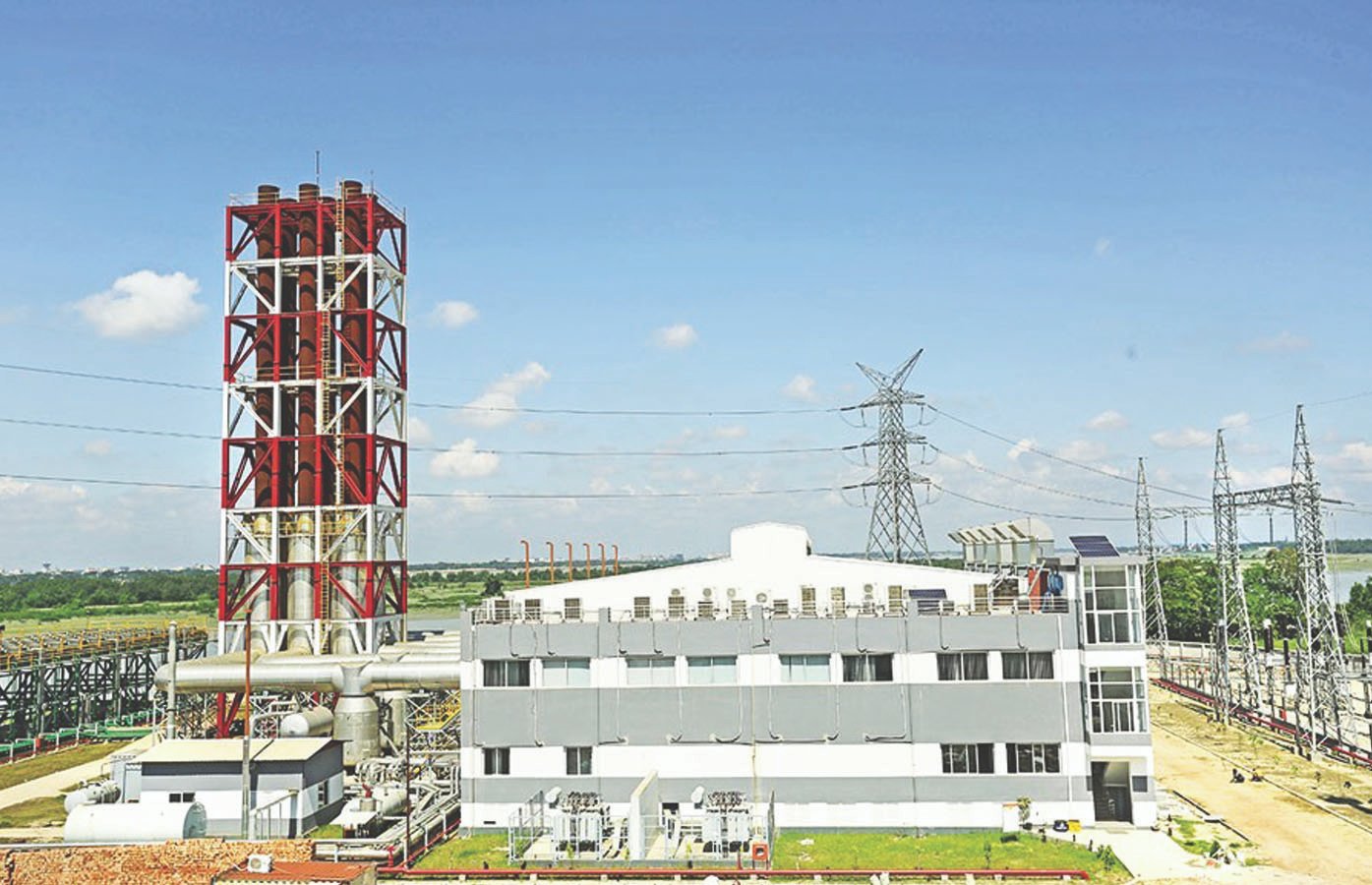
Ensuring a smooth fuel supply is the main challenge of the interim government in 2025. Irrigation, Ramadan, and summer will create a peak demand of 17,500-18,000MW. Regarding the generation capacity, power evacuation, and distribution facilities, there are no major issues. But the challenge is ensuring a sustainable supply of required fuel. The previous government unfortunately lost focus on exploring and exploiting domestic fuel resources. Without properly assessing the risks and challenges of fuel import, the previous government preferred imports. The volatile global fuel market created price challenges, and import infrastructure created transportation issues. By 2024 power generation became almost 50% dependent on import. Fuel supply shortage caused about 4,500-5,500MW generation capacity to remain idle, still requiring huge capacity charges. All these increased costs of generation significantly. State-owned enterprises became burdened with about US$ 5.0 billion in outstanding payments for electricity and fuel. The government tried addressing the situation by increasing power tariffs and fuel prices on several occasions. Even then the government struggled to pay huge subsidies. The interim government after taking over office following the fall of the previous regime inherited a trouble-prone, chaotic power and energy sector. The crisis of the power and energy sector is so deep and diverse that it will not be possible to address all challenges and manage the situation in a limited time of the interim government. But the immediate task of the government would be arranging fuel for the generation of power through intelligent choice of fuel mix – local and imported. Maximum emphasis must be given to the economic utilization of own gas and arranging required funds for the import of coal, LNG, and liquid fuel on time. The government will have to arrange the required funds to meet the huge overdue payments of SOEs. The IPPs, IOCs, fuel suppliers, and electricity exporters may resort to contractual provisions to reduce supply or even suspend. The government must also do everything possible to eliminate system loss, and pilferage, and manage the demand side through austerity and efficient use. Here we will discuss the optimum use of fuel.
Challenge: The previous government under the Speedy Power Supply Act 2010 set up different fuel-based power plants without bothering to ensure the required fuel supply. The installed capacity of grid power reached 27,840MW. Private sector power policy and IPP policy facilitated generous investment from local and foreign investors. A huge reserve margin was created without bothering the obligations of capacity charges. The former government also did not develop the power transmission grid or modernize distribution networks commensurate with the massive increase in power generation capacity. For all these, the highest demand served on 30th April 2024 was only 16,477MW. On that day load-shedding was required too. For all the constraints and challenges, it is not possible to generate 15,000MW consistently.
The government implementing its political vision has extended the power grid across Bangladesh, putting the burden on the Bangladesh Rural Electrification Board (BREB) with huge investment. Now for the power supply deficit, the BREB and its Polli Bidyut Samity suffer the most. Regions outside Dhaka, even the BREB franchise adjacent to Dhaka city suffer from massive load-shedding. Power systems start suffering in late February and early March with the commencement of irrigation. This year Ramadan will start in March and the weather will also start warming up. BPDB sources inform us that in 2025 peak power demand may reach 17,500-18,000MW. With all the shortcomings mentioned above, it will not be possible to cater to the peak demand. Even to manage the supply of 15,500-16,000MW consistently, the government must implement well-thought-out action plans.
Fuel supply is the major challenge. Let us review the gas production and supply situation. For reasons best known to policymakers of the previous government, exploration, and development of own petroleum resources onshore and offshore was not given proper attention. Virtually, nothing is done offshore apart from resolving maritime disputes with Myanmar and India. The BAPEX-only policy for onshore exploration did not bring any dividends. For a while gas production increased from 1,800 MMCFD to 2,700 MMCFD mainly due to the development of Bibiyana and Maulavibazar gas fields operated by IOC Chevron. Now production is depleted to 2,000 MMCFD. The government went for the import of LNG letting two private-sector companies – Excelerate Energy and Summit – set up FSRUs at Maheshkhali coast. The two FSRUs can supply 1,100 MMCFD. At this moment the gas system has a total capacity of 3,000-3,100 MMCFD. Bangladesh imports about 70% of LNG from Qatar and Oman under long-term contracts. 30% is imported from the volatile spot market. For various reasons, LNG imports and operations are impacted. Against the national demand of 4,200-4,500 MMCFD, there exists a 1,000 MMCFD deficit all the time. Gas is used for power generation, fertilizer production, industrial, commercial, and domestic use, and CNG.
From Petrobangla's daily gas production and supply report for January 1-2, 2025, we find Petrobangla supplied 750 MMCFD gas for power generation. In winter, peak power demand is not more than 10,000-11,000MW. Come February 2025, the power demand will start growing and by mid-March, it may reach 1,500MW and keep growing. The system must try and supply gas to some highly fuel-efficient gas-based power plants and Meghnaghat. Hope by then the under-construction Bakhrabad–Haripur 42-inch gas transmission pipeline will also be commissioned. Commissioning of the first unit of the Rooppur nuclear power plant will be a major event sometime in 2025. But for that grid security must be a top priority.
Fuel Mix for Power Generation
The power system has 11,997MW gas-based power generation capacity. This alone requires 2,200 MMCFD gas. Some industries also use gas for captive power generation. Petrobangla suspending gas supply to fertilizer plants and rationing gas to CNG can supply 1,150-1,200 MMCFD gas to power. There is no way that this year it may be different. For this also, Petrobangla needs to ensure that there is no issue with LNG imports and that FSRUs operate without interruption. BPDB must smartly use 1,200 MMCFD gas for the most fuel-efficient plants. If done about 9,000MW gas-based power generation may be possible. Even for commencing power generation from the first unit of the Rooppur nuclear power plant, 8,000-9,000MW redundant power must be available consistently. Petrobangla must also ensure that there are no major disruptions in any of the under-production gas fields. BAPEX must complete drilling works of development wells in Titas, Bakhrabad, Rashidpur, and other gas fields on a priority basis. The government must also review whether surplus power from gas-based captive power plants can be evacuated to the grid.
The next priority will be ensuring at least 5,000MW of coal-based power can be consistently generated from March-August 2025. BPDB must reduce outstanding payments to coal generators facilitating them importing coal on time. Barapukuria mine-mouth power plants must also operate without interruptions.
Bangladesh imports 2,656MW of power from Adani Group and other Indian suppliers. Here again, there are issues of outstanding payments. For effectively managing peak demand, the government requires ensuring that payment does not create impediments to the import of power.
Now come to the case of liquid fuel-based generation. Even after all the above, at least 2,500-3,000MW liquid fuel-based power generation will be required for summer peak shaving. IPPs must be paid regularly to make it happen.
We must bear in mind that it is not that easy to arrange funds for meeting the outstanding payment obligations and purchasing fuel. Systems must do their best to reduce losses and ensure efficient use. Strict austerity measures must be introduced and monitored to economize the use. Irrigation cannot be affected at all. During Ramadan, power interruption must be avoided during Iftar, Tarabi, and Sheheri. Gas and electricity supply to industries must be improved. Arranging funds, in my opinion, will be a major challenge. Hope, the government through good governance will manage smartly.
Download Cover Article As PDF/userfiles/EP_22_15_Cover_Article.pdf



